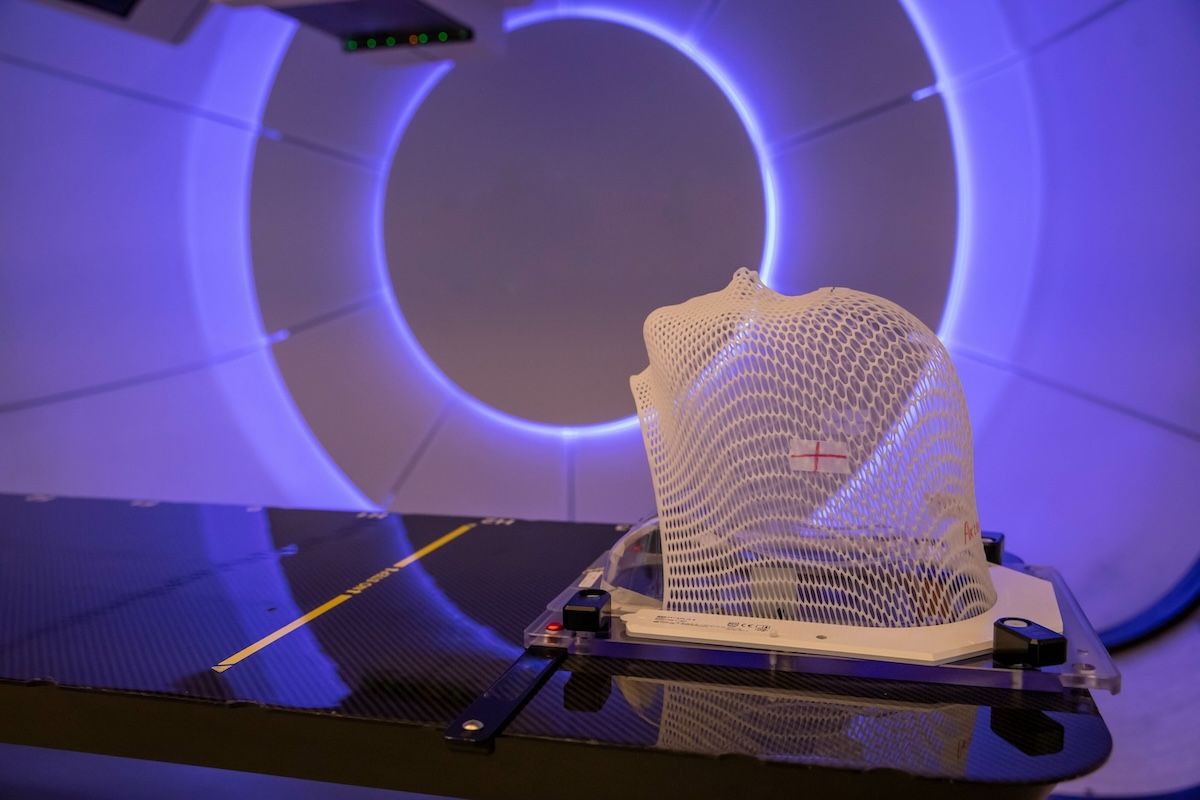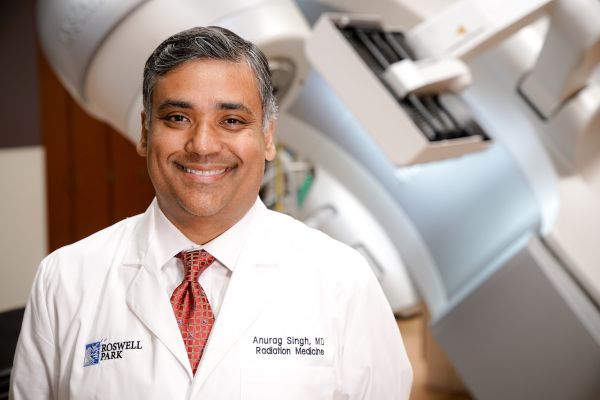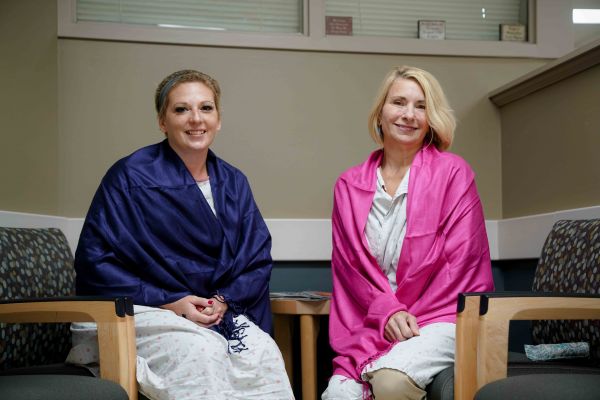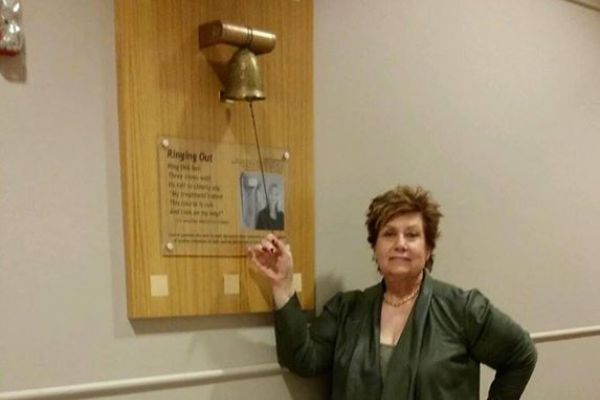If your doctor has recommended radiation treatment (or radiotherapy) for cancer of the head, neck or brain, you will likely need a custom-made radiation mask to wear during your treatments.
“The purpose of the mask is to hold your head and neck still and in exactly the right position during treatment,” says Patti Chapin, formerly a radiation therapist in the Radiation Medicine Department at Roswell Park Comprehensive Cancer Center. “It helps us to deliver the radiation beam precisely to the tumor and limit damage to healthy tissues nearby.
"The mask is your friend. We will walk you through every step of the process to help ease your concerns and make you comfortable, while providing the most precise, accurate and comfortable experience,” she says.
Before your mask is made
It’s important to have a precise fit for each and every radiotherapy session. Before your mask is fitted, you should:
- Complete any necessary dental work because it can change the shape of your face and jaw.
- Trim any bushy beard or mustache. You’ll want to keep it closely cropped and trimmed throughout your treatment, so that the mask fits precisely for each session.
- Avoid major hairstyle changes, but don’t worry about hair loss or even weight loss that may occur over the course of treatment.
Step 1: Making the mask and your planning session
Your mask will be made during an appointment called a "planning session," which takes about 30 minutes. The radiation therapist will be with you throughout this period to address any of your concerns or fears.
First, you’ll remove any wig or head scarf, and put on a hospital gown. Then you’ll lie on a CT scan table and the technologist will help you get positioned comfortably. The mask is made from a flat piece of plastic mesh. It’s warmed until it softens and then it’s gently stretched over your face to conform to your head. “You can see and breathe through it at all times, and it will not hurt you,” says radiation therapist Tracy Hails. “It feels like a warm washcloth on your face. As it cools, it hardens and holds the shape. At this point you are halfway done with the planning session.”
Then you’ll have a planning CT scan with the mask on, to ensure that your head remains still and in the proper treatment position. Once the scan is performed, marks are drawn on the mask and photos and measurements are taken. Your mask will then be removed and stored at Roswell Park.
Step 2: The radiation team plans your treatment
In the following days, Roswell Park radiation oncologists, medical physicists and dosimetrists will work as a team to develop the best treatment plan for you. Using a computer-generated 3D virtual model of your planning CT scan, the team maps out your tumor target area and normal tissues and determines the dose of energy to be delivered (how much, over how many treatments) to your tumor.
Why Roswell Park for your treatment?
Our oncologists not only follow the evidence based NCCN treatment guidelines used by physicians around the world; they write them.
Step 3: The verification simulation
Once the treatment planning is complete, you will come in for a verification simulation. Also called a “dry run,” this is a trial run for your treatment, but without radiation. For this, you will lie on a treatment table and your mask will placed on you. After checking the fit of your mask and the positioning of your body, the technologists will take a set of images that verify precise starting points and coverage, to make sure that they are treating exactly the proper area, as determined by your doctor and planning team.
Step 4: The treatments
Your mask will be kept at Roswell Park and you will wear it for each of your radiotherapy sessions. “Patients generally have two to seven weeks of radiation treatments, nearly every day. We get to know them well. They become like family," says Hails. “We talk to them every day and we learn about their families, what they did on the weekend and what they had for dinner.”
“We know that this can be an especially difficult time in a person’s life,” Chapin adds. “They may be afraid and their treatment may cause some uncomfortable side effects. We try to always be sensitive to this. We encourage open communication with our patients and ask them to let us know if they are uncomfortable in any way so that we can help them, while ensuring that we provide them with the best possible treatment. It is truly and honor and privilege to be working at Roswell Park, and to serve our patients with compassion.”



